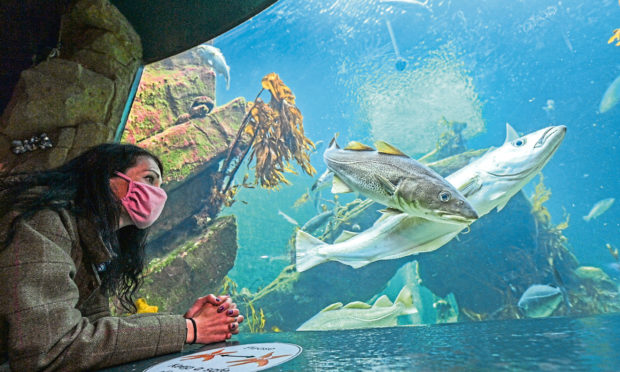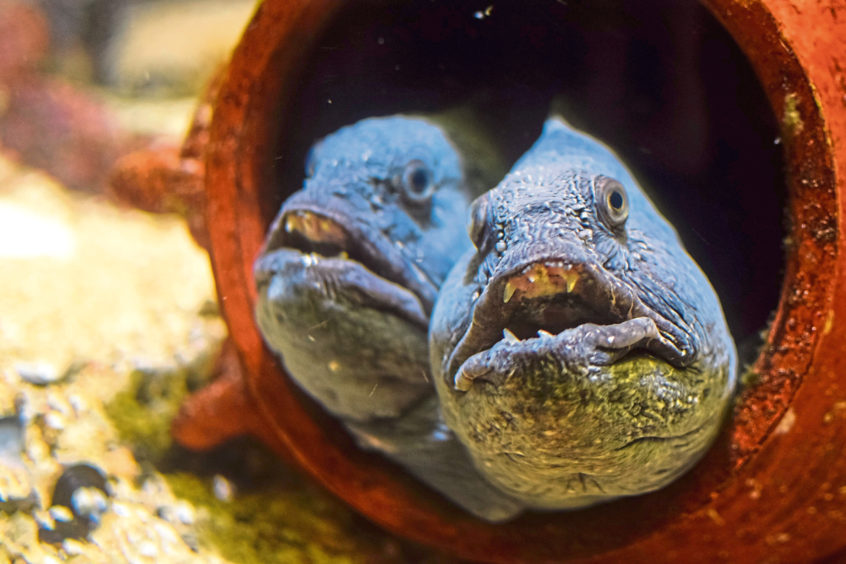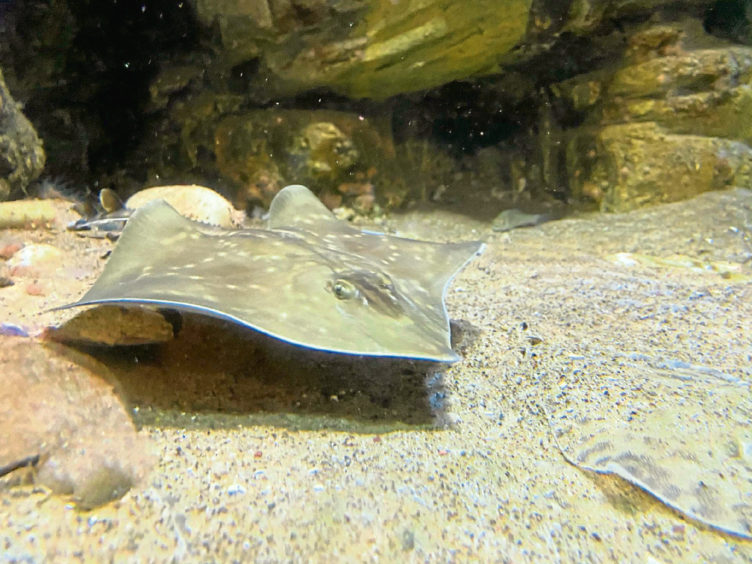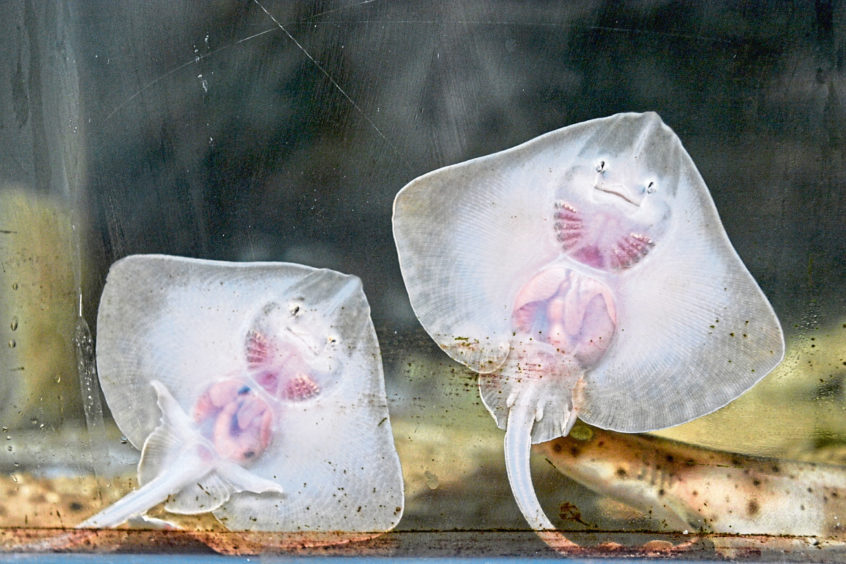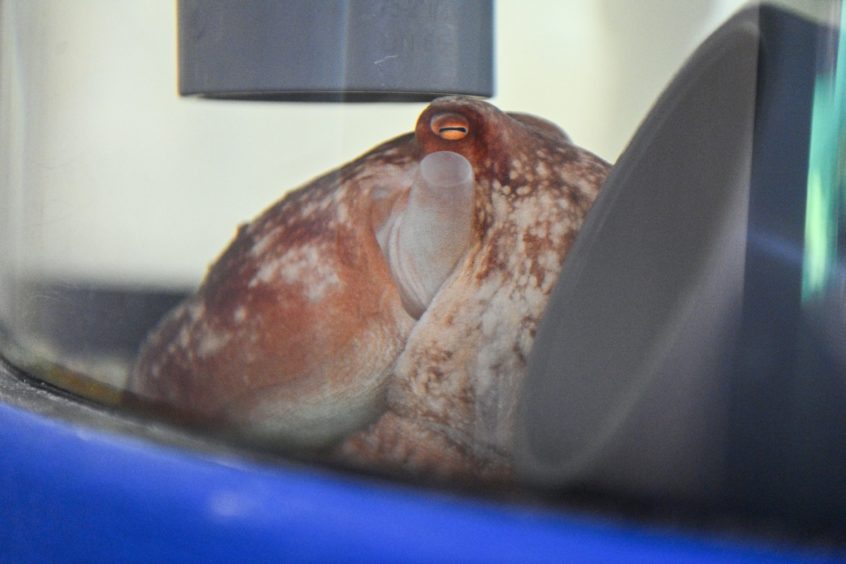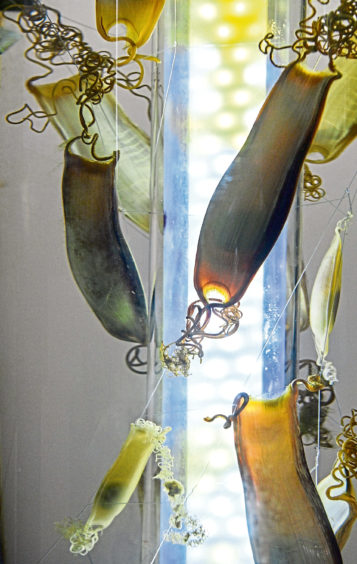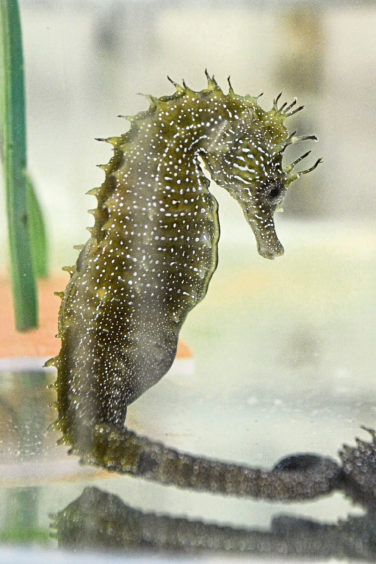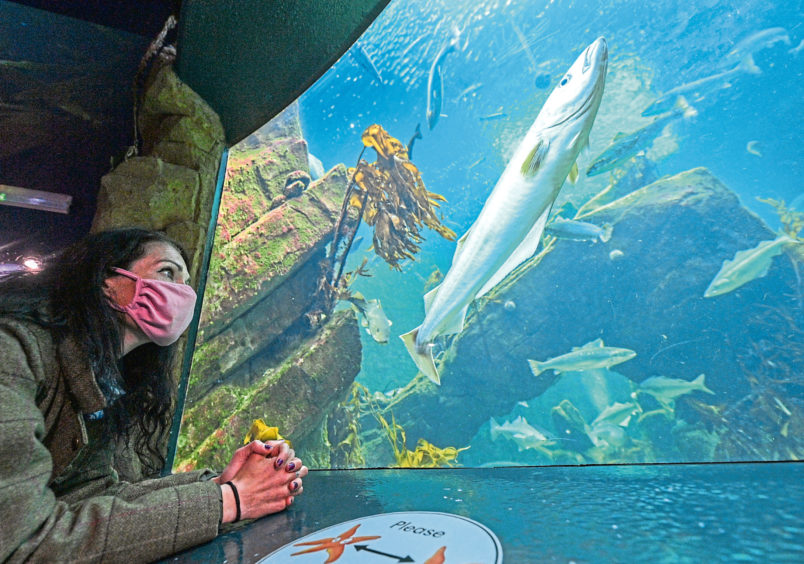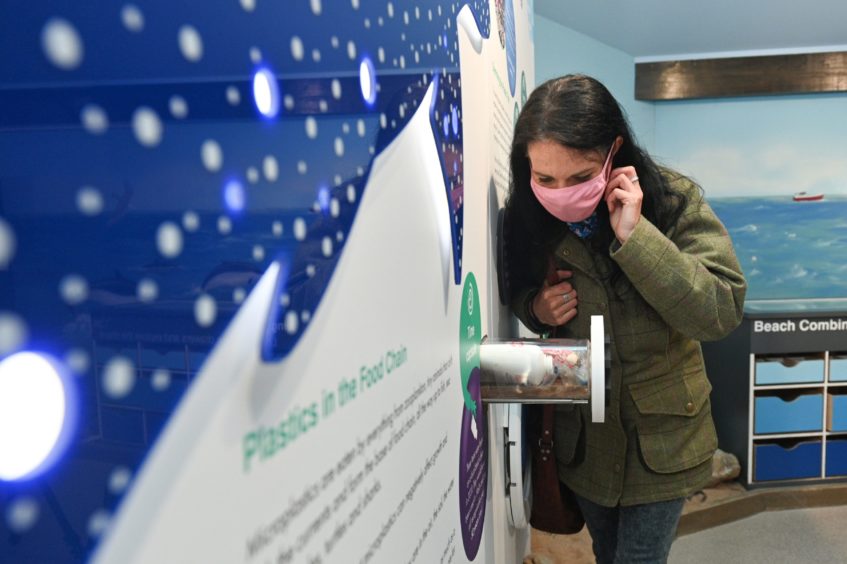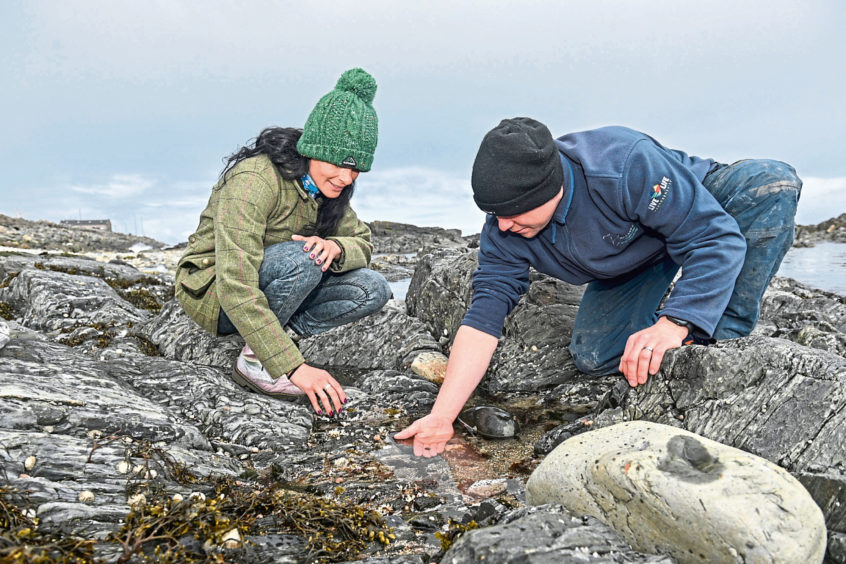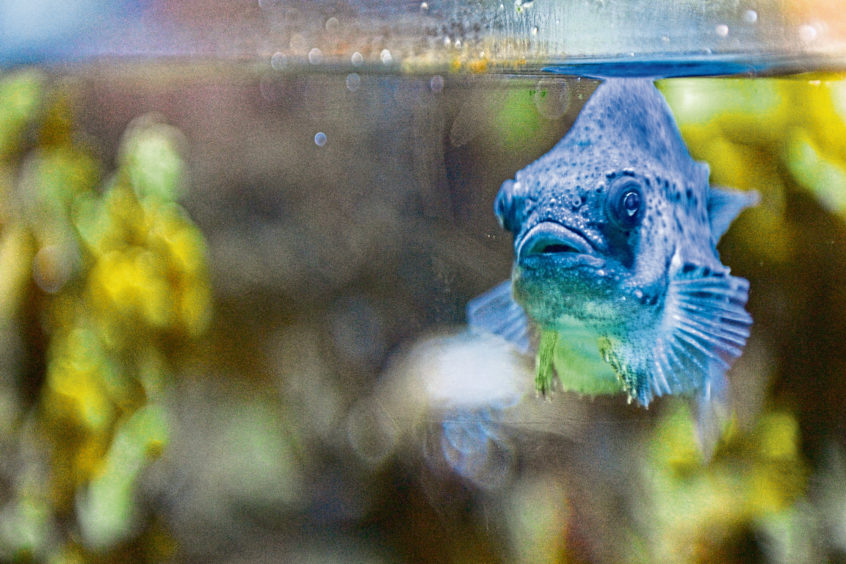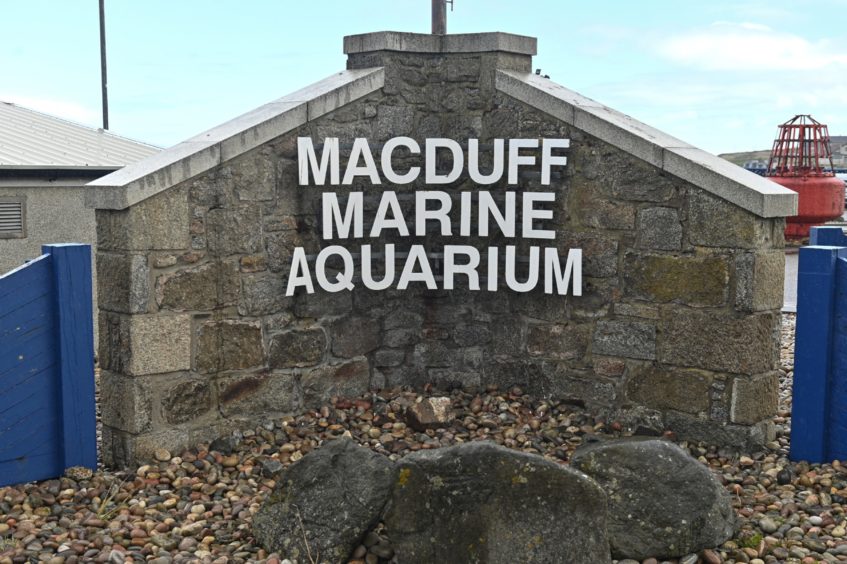Gayle heads to Macduff Marine Aquarium and meets a myriad of sea creatures that live in the steely blue Moray Firth waters.
As a lover of animals, I’m uneasy about describing any species as ugly, but when I stare into the bulging eyes of a wolf fish, I can’t help it.
I spot one lurking in a forest of seaweed in a tank at Macduff Marine Aquarium and, with his fierce fang-like teeth and fat, rubbery lips, I feel somewhat repelled by him.
Contrast this guy with a cute and charismatic seahorse and you’ll probably agree old Wolfie is never going to win any beauty contests.
I’ve come to the fantastic aquarium with the aim of checking out the newest fish in town – Cedric the baby flapper skate – but there are so many fantastic fish to ooh and aah at.
Right now, Cedric, a critically endangered species rescued from Orkney, tops the bill on a host of new attractions on offer at the aquarium.
He moved here in December after an Orkney Skate Trust research survey found his developing embryo inside a damaged egg case.
The egg couldn’t be returned to the sea as it was unlikely to survive – so was carefully nurtured in a fish tank in a researcher’s garage and successfully hatched.
Now Cedric – the only flapper skate in a UK aquarium – is thriving in shallow waters.
He’s a cute wee thing but tricky to pick out when he’s chilling out at the bottom of the tank because he’s fantastically well camouflaged.
I peer through the glass, willing him to pop his head up and say hello, but he must be enjoying being used as a scratching post by a greater spotted dogfish because he stays put.
Cedric was 29cm when he arrived but displays officer Chris Rowe tells me flapper skates, which are the largest skates in the world, can grow to nearly 10ft long and 6ft across the wings. And they can live for 100 years!
The trouble is, they don’t reach sexual maturity until they’re about 10 and in that time, they could be polished off by other fish.
Rarer and more endangered than giant pandas, blue whales and mountain gorillas, it’s been illegal to land the species commercially since 2009, so hopes are high there could be an increase in population numbers.
When Cedric is deemed fit and ready, he will be released into wild waters, hopefully to breed.
Cedric aside, the aquarium has a wide range of skates, rays and sharks and many other species, from the sinister looking spider crab to tompot blenny and scorpion fish (equally creepy), star fish, sea urchins, anemone, dead man’s fingers, bobtail squid, lumpsuckers, and, later in the season, jellyfish.
There’s also an octopus, recently found in a creel nearby, hanging out here.
“We’ll only keep him, or her, for a maximum of six months because these guys get bored and need stimulation,” explains Chris.
Ever-resourceful, he built a “playpen” for the intelligent creature out of bits of pipe.
“If an octopus gets bored or unhappy, it starts turning white,” he says.
“We’ll return it to the wild when it shows signs of either laying eggs or boredom.”
The shark hatchery is another cool area, with egg cases, or “mermaid’s purses” hanging in a tank.
But a huge highlight is checking out the delicate seahorses, and being informed by Chris that it’s the males who carry the young and give birth!
Jemina the halibut, the biggest fish at the facility, is also worth looking out for, as are the array of flat fish, which weirdly have both eyes on the same side of their heads.
You could easily while away an entire afternoon gazing into the deep kelp reef exhibition, watching fish of all shapes and sizes float, swim and, if you’re lucky, watch them being fed by a diver.
The tank has a meditative, calming effect, as well as being exciting – especially when a wolf fish shows his (ugly) face!
The aquarium recently opened a series of interactive display areas, with one exploring the issue of plastic pollution and featuring a bottle of bleach and a Smiths crisp bag from the 1960s found close by.
Both are perfectly preserved, underlining the risks plastics pose to the sea.
Before I leave, Chris suggests we stroll down to the shore and peer into some rock pools.
Within seconds, we find a periwinkle, a hermit crab, a tiny shore crab and some barnacles.
The tide is coming in but it’s a taster for a “rock pool ramble” event the aquarium is hosting on May 16.
Chris, who has worked at the aquarium for almost a decade, is passionate about the Moray Firth.
“This coastline is highly underestimated,” he says. “Tourists tend to be drawn to the west coast but the east has so much beauty.”
The area is certainly well worth a trip, and if you’re coming from afar, you can explore the gorgeous fishing villages of Pennan (the location for Local Hero starring Burt Lancaster), Gardenstown and Crovie, which are just a few miles along the road.
- Macduff Marine Aquarium is operating with social distancing and additional hygiene measures. Talks, feed shows and guided behind-the-scenes tours and experiences are suspended until further notice. macduff-aquarium.org.uk
